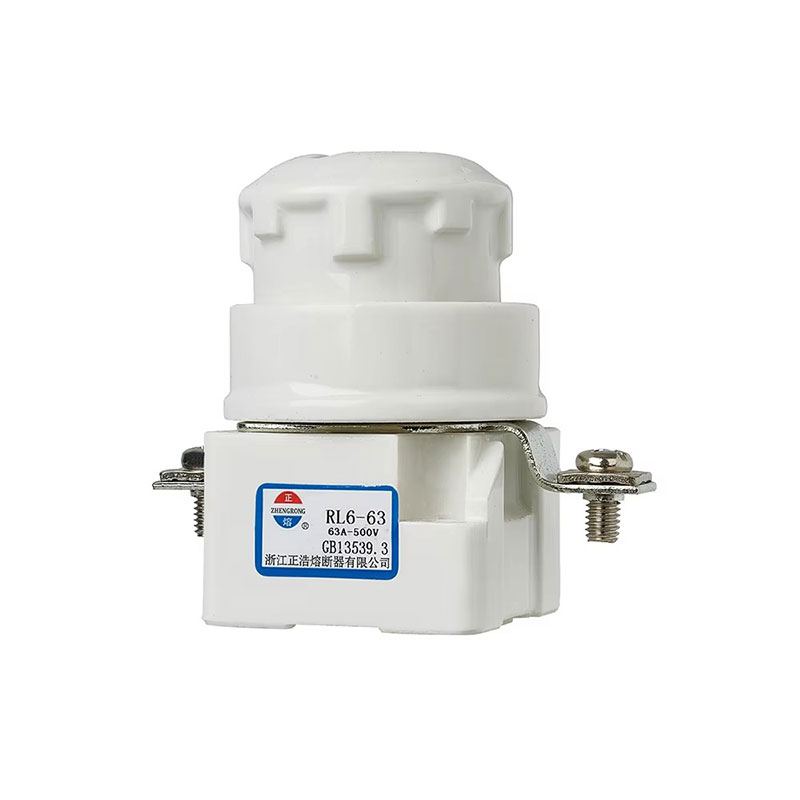What Makes the Screw Type Fuse Critical for Electrical Protection?
2025-10-14
The screw type fuse is a widely used electrical protection device designed to interrupt fault currents and prevent damage to circuits.
What Is a Screw Type Fuse — Definition and Specifications
A screw type fuse (also called Edison-base fuse or screw-in fuse) is a type of overcurrent protective device that installs by screwing into a threaded fuse holder. It is common in residential, industrial, and utility circuits for protecting wiring and equipment.
Core Specifications
Here is a representative specification table for a typical screw type fuse model:
| Parameter | Typical Value / Range | Notes |
|---|---|---|
| Rated Voltage | 110 V, 220 V, 240 V, 250 V AC | Depending on regional electrical system |
| Rated Current | 1 A to 100 A (or higher) | Multiple current classes available |
| Breaking Capacity | 5 kA to 100 kA | Maximum fault current it can safely interrupt |
| Time-Current Characteristic | Fast (fuse) / Slow (time-delay) | Options for standard or slow-blow fuses |
| Mounting Type | Edison screw thread (E26, E27 etc.) | Standard base size for compatibility |
| Body Material & Insulation | Ceramic, fiberglass, or special insulating plastic | To withstand heat and arc extinction |
| Operating Temperature | –40 °C to +85 °C | Typical environmental rating |
These parameters allow buyers and engineers to match fuse selection precisely with load conditions, fault currents, and safety margins.
Why Choose a Screw Type Fuse — Advantages & Applications
Safety & Reliability
-
The screw type fuse offers robust overcurrent protection. When overcurrent or short-circuit conditions occur, it opens the circuit cleanly, preventing wiring damage, fire risk, or equipment failure.
-
It exhibits predictable time-current behavior, allowing coordination with other protective devices downstream.
Ease of Replacement and Maintenance
-
Screw-in installation is simple and requires minimal tools. Technicians can replace the fuse by unscrewing the spent fuse and screwing in a new one.
-
The design supports modularity: different fuse ratings and types (fast, slow, high interrupt) can be swapped in the same socket.
Compactness & Space Efficiency
-
Screw type fuses are compact and take up little panel space compared to some bulky fuse blocks or circuit breakers.
-
They suit retrofits in systems originally built for Edison socket fuses or older fuse circuits.
Cost-Effectiveness
-
Manufacturing and component costs are relatively low, making screw type fuses economical per unit.
-
Lower maintenance cost due to ease of replacement and standardized parts.
Wide Application Scenarios
-
Residential distribution panels or old fuse box systems
-
Control panels, lighting circuits, motor circuits (with appropriate fuse rating)
-
Backup protection in industrial gear and switchgear
-
Temporary protection in test rigs or maintenance setups
Compatibility and Standardization
-
Many standards (IEC, UL, ANSI) define screw-base fuse styles, so compatibilities across manufacturers exist.
-
It’s often used where legacy systems depend on Edison screw fuses, offering backward compatibility.
How Does a Screw Type Fuse Work — Operation, Coordination, and Installation
Working Principle
-
Normal Operation: Current flows through a metal fuse element (wire or strip) inside the fuse body.
-
Overcurrent Condition: When the current exceeds the rated current long enough, the fuse element heats, melts, or arcs open the circuit.
-
Circuit Opening and Arc Quenching: In rapid fuses, the element vaporizes cleanly; in time-delay versions, a coiled element allows brief inrush. An insulating medium (sand, ceramic, or arc-chutes) helps extinguish arcs rapidly.
-
Safe Isolation: Once blown, the circuit is safely interrupted and must be reset by replacing the fuse.
Coordination and Selectivity
-
Fuses are selected such that upstream devices don’t operate before downstream ones. This coordination (or discrimination) avoids unnecessary shutdowns of large portions of a system.
-
Time-current curves are studied to achieve proper cascade protection.
-
Use of time-delay vs fast-acting screws based on inrush, motor loads, starting loads.
Installation Guidelines
-
Ensure the fuse rating (current, voltage, breaking capacity) matches the circuit requirements and fault levels.
-
Confirm correct base size (e.g. E26, E27) and compatibility of threads.
-
Use torque limits recommended in datasheets to avoid damage to threads or losing contact.
-
Install with clean contacts and avoid corrosion (clean screw threads).
-
Replace fuses only when the circuit is de-energized to avoid arc or shock hazards.
-
Label fuse type, rating, and replacement instructions inside fuse compartments.
Testing and Maintenance
-
Periodically verify that fuse holders are tight and free of overheating (check for discoloration or heat marks).
-
When a fuse blows, inspect the circuit for fault causes before replacement.
-
Use thermal imaging to spot hot joints in fuse holders.
-
Keep spare fuses of common ratings on hand to reduce downtime.
Derating and Environment Considerations
-
In high ambient temperatures, derate fuse current (e.g. 80–90 % of nominal) per manufacturer guidance.
-
In high altitudes or low pressure environments, arc extinguishing may differ.
-
Shock, vibration, humidity, and corrosive atmospheres must be considered in fuse body and materials selection.
Emerging Trends, Challenges, and Future Directions
Digital and Smart Fuses
-
Integration of sensors (temperature, current) inside fuses to provide remote monitoring, fault logging, early warning, or predictive maintenance.
-
Embedded microcontrollers or IoT modules that report fuse status, load cycles, or proximity to end-of-life.
Compact, High-Breaking Designs
-
Innovations to increase breaking capacity while maintaining compact Edison-base form factors.
-
New materials (e.g. improved ceramics, composites) or arc suppression techniques that allow high fault interruption in small footprints.
Hybrid Protection Devices
-
Combining screw-in fuses with electronic circuit breakers or solid-state protection in one modular unit.
-
The result: the simplicity of screw fuse plus the flexibility of adjustable trip curves and remote reset.
Renewable Energy and Grid Applications
-
Use in PV inverter systems, battery systems, microgrids, and energy storage circuits requiring dependable overcurrent protection.
-
Fuses tailored for DC applications (high DC interrupt) in solar, EV charging, energy storage — screw base or adaptations thereof.
Eco-friendly Materials and Recycling
-
To meet environmental regulation, fuse bodies designed with recyclable or bio-based materials.
-
End-of-life programs and responsible disposal or recycling of fuse components.
Challenges to Address
-
Space is tight in modern compact enclosures; balancing performance vs size is critical.
-
Managing heat, arc suppression, and mechanical strength in compact fuses.
-
Ensuring compatibility across legacy infrastructure and new smart systems.
-
Certification and standardization delays when integrating electronics into fuses.
Common Questions About Screw Type Fuses — Q&A
Q1: What is the difference between a fast-acting screw fuse and a time-delay screw fuse?
A1: A fast-acting screw fuse responds immediately when current exceeds its rating, useful for purely resistive loads or short circuits. A time-delay (slow-blow) screw fuse allows short transient overcurrents (inrush, motor start) for a brief period before opening, thus avoiding nuisance blowing under normal startup pulses.
Q2: How to determine the correct breaking capacity for a screw type fuse?
A2: The breaking capacity (interrupting rating) must exceed the maximum prospective fault current at the installation point. Choose a fuse whose interrupt rating is higher than the highest possible short-circuit current in that circuit. Additionally, follow standards or utility limits to ensure safety margins.
Integration with Brand & Call to Action
By leveraging technological innovation and stringent manufacturing standards, Zhenghao Fuse continues to lead in screw type fuse design and production. Every Zhenghao screw-in fuse undergoes rigorous testing—thermal, overcurrent, endurance, and interrupt tests—to ensure reliability under real-world conditions.
For tailored solutions, custom ratings, or technical consultation, contact us today to discuss your screw type fuse needs with Zhenghao Fuse’s expert team.



